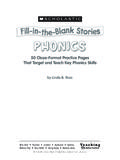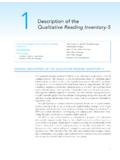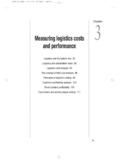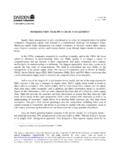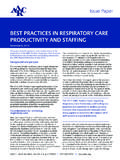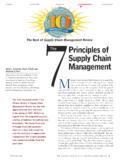Transcription of *Rasinski (grades 1-4) - Teacher Direct
1 Introduction53-Minute Reading Assessments: Word Recognition, Fluency, and Comprehension Grades 1 4 Scholastic Teaching Resourcesssessment is a critical element of successful instruction. Assessment helps teachersdetermine if the instruction they provide students has resulted in adequate studentprogress. It allows teachers to identify students who can benefit from a more acceleratedinstructional program and those who need more intensive instructional intervention andsupport. And, if the assessment has sufficient precision, it allows teachers to identify a focus fortheir instruction.
2 In a sense, assessment provides teachers (and schools and parents) withroadmaps that indicate where their children areacademically, and where they need to has indicated that assessment is critical to successful instruction. An internationalstudy of reading achievement, for example, found that regular assessment was a key factorassociated with student success in learning to read (Postlethwaite & Ross, 1992). In recent years, state and federal education mandates have required schools and schooldistricts to more closely monitor student performance across a number of content areas andgrade levels .
3 These types of large-scale, typically norm-referenced assessments are most valuablefor school administrators and policy makers in determining general trends in achievement andrecommending policies and procedures at the national, state, and district levels for improvingeducational quality. For several reasons, however, these kinds of assessments cannot provideteachers with the information they need to make instructional decisions for individual problem is timing it frequently takes months for teachers to receive assessment results. Insome cases a student has already moved on to the next grade before results are available.
4 Inaddition, the scores on these tests do not lead naturally to instructional changes. Most often,scores simply tell whether or not a student has achieved proficiency rather than providinginformation about diagnostic needs or instructional the large-scale, general assessments that provide snapshots of achievement for a largenumber of children, a number of other reading assessments that lead to more preciseinstructional interventions are available. Some are commercial standardized tests such as thegroup-administered Stanford Diagnostic Reading Test and the individually administered WoodcockReading Mastery Test.
5 Others, such as informal reading inventories (IRIs) and running records(Clay, 1993) are more informal in nature and are based on teachers ability to interpret thereading behaviors that they record. Still others, such as the Developmental Reading Assessment(Beaver, 1997) and the Qualitative Reading Inventory(Leslie & Caldwell, 2000) are hybrids ofcommercial standardized tests that include a strong informal, Teacher -interpretation of these assessments provide teachers with an in-depth view of their students as readers their level of achievement and, to some extent, their various strengths and areas of concern inreading.
6 If there is one major drawback to these sorts of assessments it is time. These and many of theother formal and informal reading assessments that are available to teachers take a considerableamount of time to prepare, administer, and score. The full-scale administration of an informalreading inventory, for example, can take one to two hours to give to a student and another hour(at least) to score and interpret. Although the data obtained from such an assessment are validand valuable, the amount of time needed to administer such an assessment to every student in aclassroom is prohibitive.
7 Ain mind, we feel confident in stating that these passages are on grade level and are equivalent,within each form, in terms of few additional notes about grade levels and the way we ve set up these assessments: Werecommend having students read passages at their assigned school-year grade levels because thiswill help you determine their level of performance on passages that they are expected to masterduring that school year. In other words, while one third grader may be reading comfortably atfourth-grade level and another at second-grade level, this assessment enables you to determinehow well both students will be able to read the grade-level texts you use for instruction.
8 Studentswhose grade-level performance is excellent may not need repeated assessment. Those whostruggle with the grade-level passage will need additional diagnosis. Retesting these students ongrade-level test passages throughout the school year will easily allow you to gauge their for Administering 3-Minute Reading AssessmentsAdministering these assessments is simple and straightforward. You simply ask students to read agrade-level passage to you and ask them to recall what they remember from the passage afterthey ve read it. While students read and recall the passage, you monitor their performance forword recognition, fluency, and comprehension.
9 Specific directions are outlined below:1. Present the student with a copy of the passage from 3-Minute Reading Assessmentsthatcorresponds to his assigned grade level. Ask the student to read the passage orally to youin the way he might normally read the passage. Tell the student that at the end of thereading you will ask him to tell you what he remembers about the The student reads the passage aloud for 60 seconds. If she stops at an unknown word anddoes not attempt to pronounce it for 2 seconds, or if she attempts the word but clearly haslittle chance of reading it correctly, tell her the word and ask her to continue the oral reading, keep your copy of the passage in front of you.
10 Mark anyuncorrected errors that the student makes by drawing a line through the missed include words that are mispronounced or that you provide to the student andwords that the student omits. If a student initially mispronounces or omits a word, butcorrects it, write and circle a cabove the word to indicate it was corrected (and do notcount these corrected words as errors). At the end of the 60-second period, mark thepoint the student has reached in her reading of the After the student has read for 60 seconds, Direct his attention to the beginning of the textand ask him to follow along silently while you read the text aloud.
